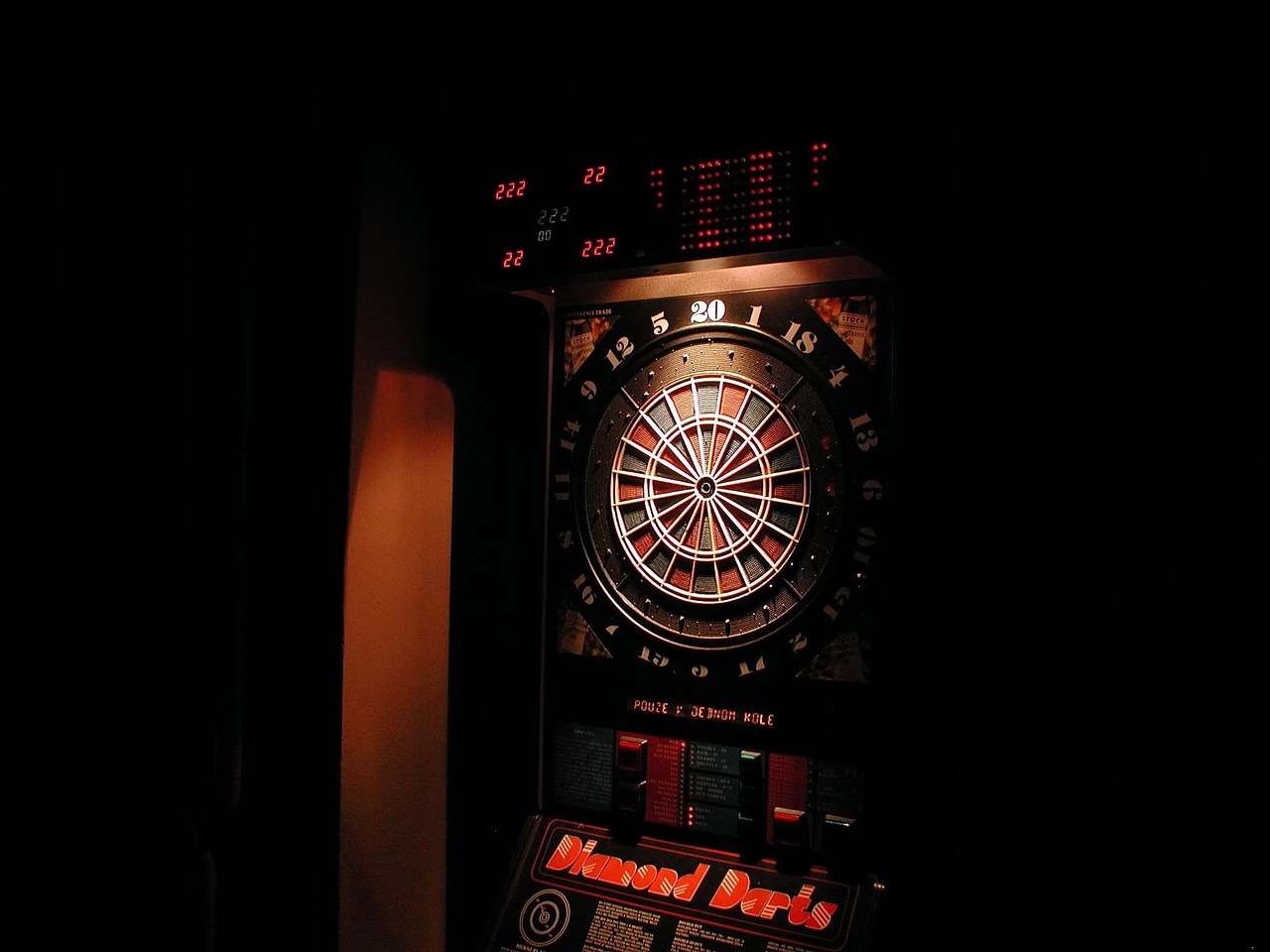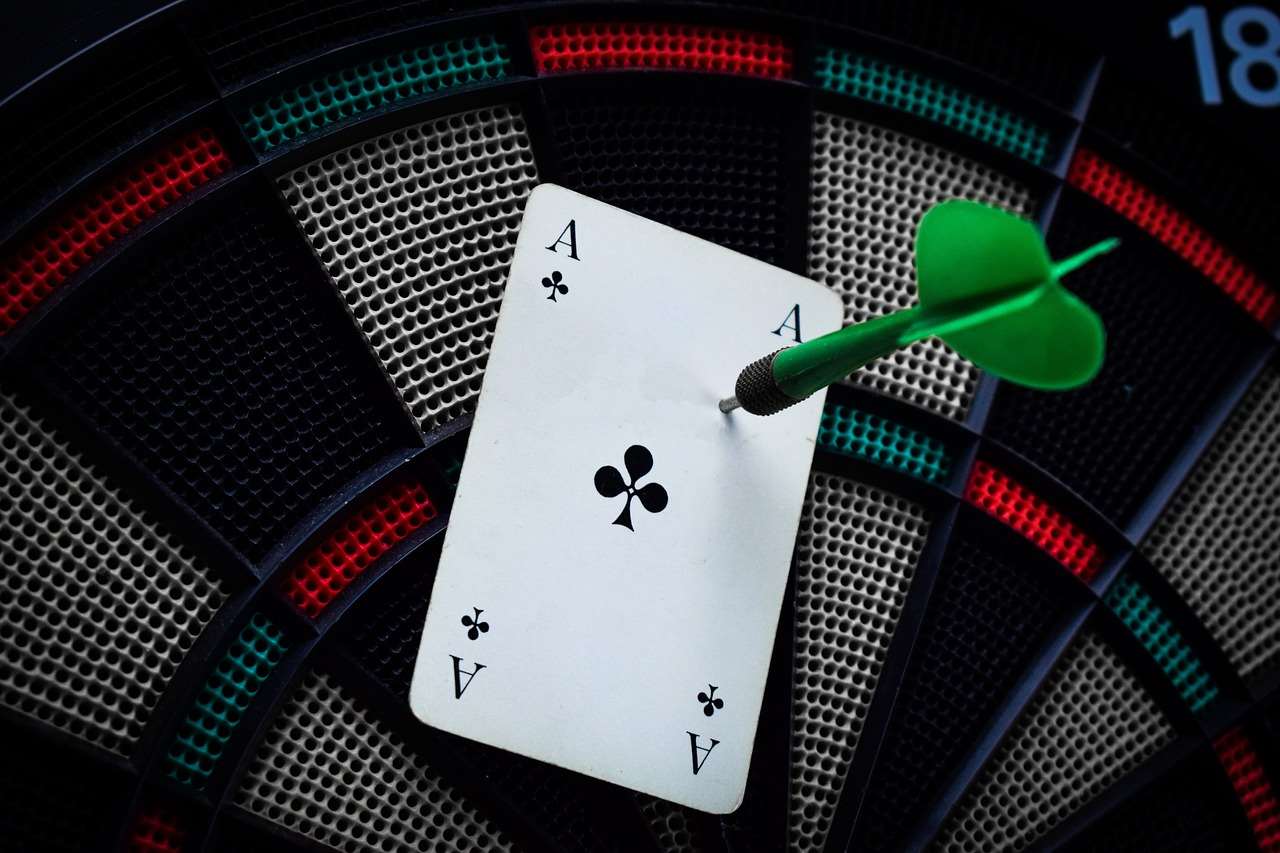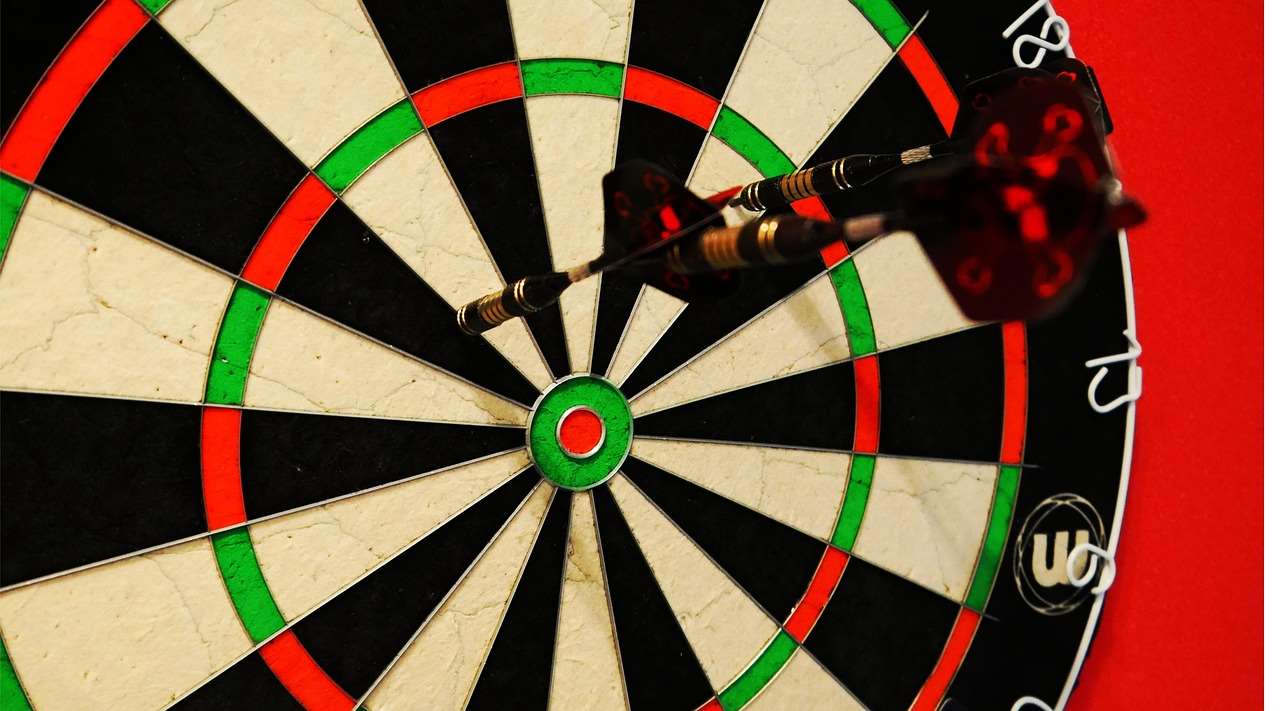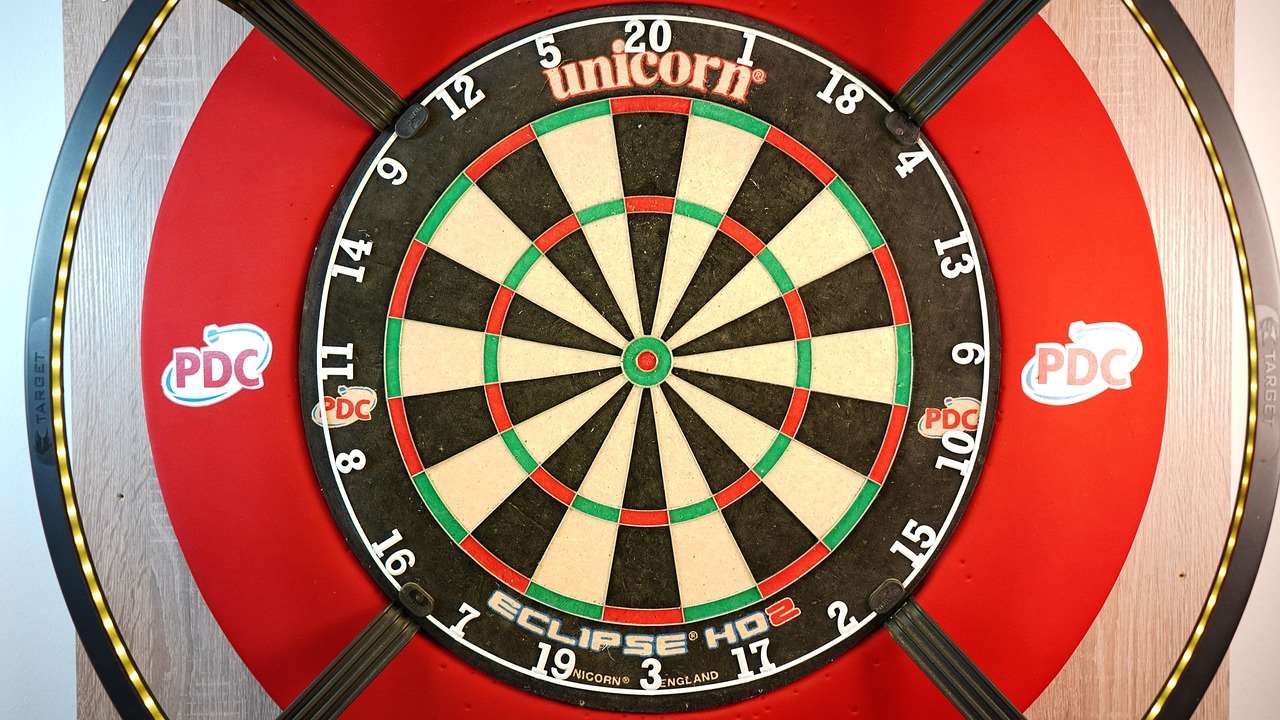Understanding darts scoring is crucial for enjoying and excelling at this popular game. This article will explain the basic rules of darts scoring and offer tips to improve your game. We’ll cover everything from the fundamentals to more advanced scoring strategies.
⚠️ Still Using Pen & Paper (or a Chalkboard)?! ⚠️
Step into the future! The Dart Counter App handles all the scoring, suggests checkouts, and tracks your stats automatically. It's easier than you think!
Try the Smart Dart Counter App FREE!Ready for an upgrade? Click above!
Before diving into the intricacies of darts scoring, let’s establish the fundamental objective: to be the first player to reach a predetermined score, typically 301, 501, or a similar number. This involves throwing darts at a numbered dartboard, strategically aiming for sections that maximize points in each turn. Mastering darts scoring involves more than just throwing darts; it’s about planning each throw to achieve the desired points effectively and efficiently.
The dartboard itself is a key element of darts scoring. It’s divided into 20 numbered segments, each with a double and triple ring surrounding it. The bullseye, or bull, is in the center, worth 50 points, and the outer bull, or single bull, is worth 25. Points are accumulated based on the segment the dart lands in. Understanding this layout is the first step towards mastering darts scoring.
Understanding the Basics of Darts Scoring
The core of darts scoring lies in simple addition and subtraction. Players start with a pre-determined score (e.g., 501) and subtract the points accumulated from each turn. The first player to reduce their score to exactly zero by hitting a double (or single in some games) wins the leg. Getting a score of zero by hitting a single number is often referred to as “busting”. This is a common mistake for those new to darts scoring, so focus on carefully calculating your score to avoid it.

Let’s say you’re playing a game of 501. On your first turn, you hit a 20, a triple 19, and a single 15. Your score for that turn would be 20 + (3 * 19) + 15 = 82. You would then subtract 82 from your starting score of 501, leaving you with 419. This process repeats until a player reaches zero, hitting a double, using the principles of effective darts scoring to accurately subtract from their remaining score.
Key Scoring Elements
- Singles: The base number value of each segment.
- Doubles: Double the value of the segment.
- Triples: Triple the value of the segment.
- Bullseye (Bull): 50 points.
- Outer Bull (Single Bull): 25 points.
Efficient darts scoring also involves planning ahead. Consider which numbers you need to reduce your score effectively. For example, if you only need 40 points, aiming for a double 20 is much more efficient than hitting multiple lower numbers. It all goes back to strategically planning your shots to quickly and efficiently reach a zero score, using the principles of advanced darts scoring strategies.
Strategies for Effective Darts Scoring
While understanding the basics of darts scoring is essential, strategic planning is vital for consistent success. One common strategy for darts scoring involves consistently hitting high-scoring numbers like 20 and 19, followed by strategically hitting doubles to finish the leg. However, remember to adapt your strategy based on your remaining score and the score of your opponent. In some cases, aiming for lower numbers may be more effective.

Learning to calculate your score quickly and accurately is also crucial for proficient darts scoring. This allows you to make informed decisions about your next throws, minimizing the chances of “busting” your score. For those playing more casual games, many players also make use of a darts scoring app to keep track of the score, and eliminate potential errors. Practicing your aiming and focusing on consistency will eventually lead to success in darts scoring.
Advanced Darts Scoring Techniques
As you become more experienced, you can explore advanced darts scoring techniques. For instance, understanding your “checkout” options—the different combinations of scores that allow you to finish a leg—can significantly improve your game. Websites and apps can help you practice and learn these checkouts. Remember, consistency and accuracy are key components in successful darts scoring.
Many players find it helpful to practice specific checkout scenarios, such as finishing with a double 20, or other common double numbers. This focused practice can significantly improve your ability to finish games with the principles of professional darts scoring.
Common Mistakes to Avoid in Darts Scoring
Even experienced players sometimes make mistakes in darts scoring. One common error is miscalculating your score, leading to a “bust”. Always double-check your score before throwing your next darts. Another frequent mistake is a lack of focus on consistency. Trying to hit only high scores without proper technique usually results in wasted darts and lost points. For better darts scoring, focus on consistency rather than always aiming for the highest possible scores.
Another critical mistake is neglecting your finishing technique. Practicing your doubles is essential for winning legs. Poor aim on your finishing shots can lead to missed opportunities. Consistent practice and focusing on accuracy are vital for skillful darts scoring and can help you to avoid unnecessary mistakes.
Tips for Improving Your Darts Scoring
Regular practice is key to improving your darts scoring. Start by focusing on your throwing technique and consistency. Practice hitting different numbers on the board, including singles, doubles, and triples, improving your precision and consistency in your darts scoring abilities. Also, incorporate practice games to simulate real-game scenarios and hone your decision-making skills under pressure, practicing your darts scoring in a realistic environment.
Consider using a Practice darts app with scoring to track your progress and identify areas for improvement. Many apps offer detailed statistics and analysis to help you refine your strategy and pinpoint areas where your darts scoring can improve. Remember, consistent practice and strategic planning are the foundations of successful darts scoring, and these steps can help you achieve your goals.

Beyond the mechanical aspects, mental preparation is crucial. Stay focused, avoid distractions, and maintain a positive attitude. A clear mind allows for better decision-making during the game. Visualizing successful throws can boost your confidence and improve your concentration in your darts scoring performances.
Different Game Formats and Their Scoring
The rules of darts scoring can vary depending on the game format. While 501 is a common choice, other formats like 301 or cricket exist, each with its own nuances. Understanding these variations is important for playing competitively. Researching these formats can broaden your understanding of the game and enhance your darts scoring abilities.
For instance, cricket involves hitting specific numbers a certain number of times, rather than reaching a zero score. Learning the rules and scoring methods for different variations can make you a more versatile and capable darts player. Exploring various game formats will also help you strategize efficiently and expand your understanding of darts scoring variations.
Understanding the nuances of different game formats adds a new level of depth to your darts experience. It challenges you to adapt your strategies, improving your darts scoring adaptability and overall game sense.

In games like 501, aiming for high scores initially may seem intuitive, but it’s crucial to consider your finishing strategy. Aiming for doubles to close out a game is crucial for efficient darts scoring. Consider your remaining score and plan your throws accordingly to smoothly transition from the early to later stages of the game.
Conclusion
Mastering darts scoring involves more than just throwing darts; it requires understanding the rules, implementing strategies, and practicing consistently. By focusing on accuracy, consistency, and strategic planning, you can significantly improve your game. Remember to utilize the tips and techniques outlined in this article, and you’ll be well on your way to becoming a more proficient darts player. So grab your darts, head to the board, and put your new knowledge of darts scoring to the test! Remember to check out our other articles for further tips on improving your game such as darts triple and darts score needed. Don’t forget to check out resources on what are dart barrels made of and 20g darts if you want to improve your equipment.
Start practicing today and experience the rewarding challenge of perfecting your darts scoring! Happy throwing!
Hi, I’m Dieter, and I created Dartcounter (Dartcounterapp.com). My motivation wasn’t being a darts expert – quite the opposite! When I first started playing, I loved the game but found keeping accurate scores and tracking stats difficult and distracting.
I figured I couldn’t be the only one struggling with this. So, I decided to build a solution: an easy-to-use application that everyone, no matter their experience level, could use to manage scoring effortlessly.
My goal for Dartcounter was simple: let the app handle the numbers – the scoring, the averages, the stats, even checkout suggestions – so players could focus purely on their throw and enjoying the game. It began as a way to solve my own beginner’s problem, and I’m thrilled it has grown into a helpful tool for the wider darts community.